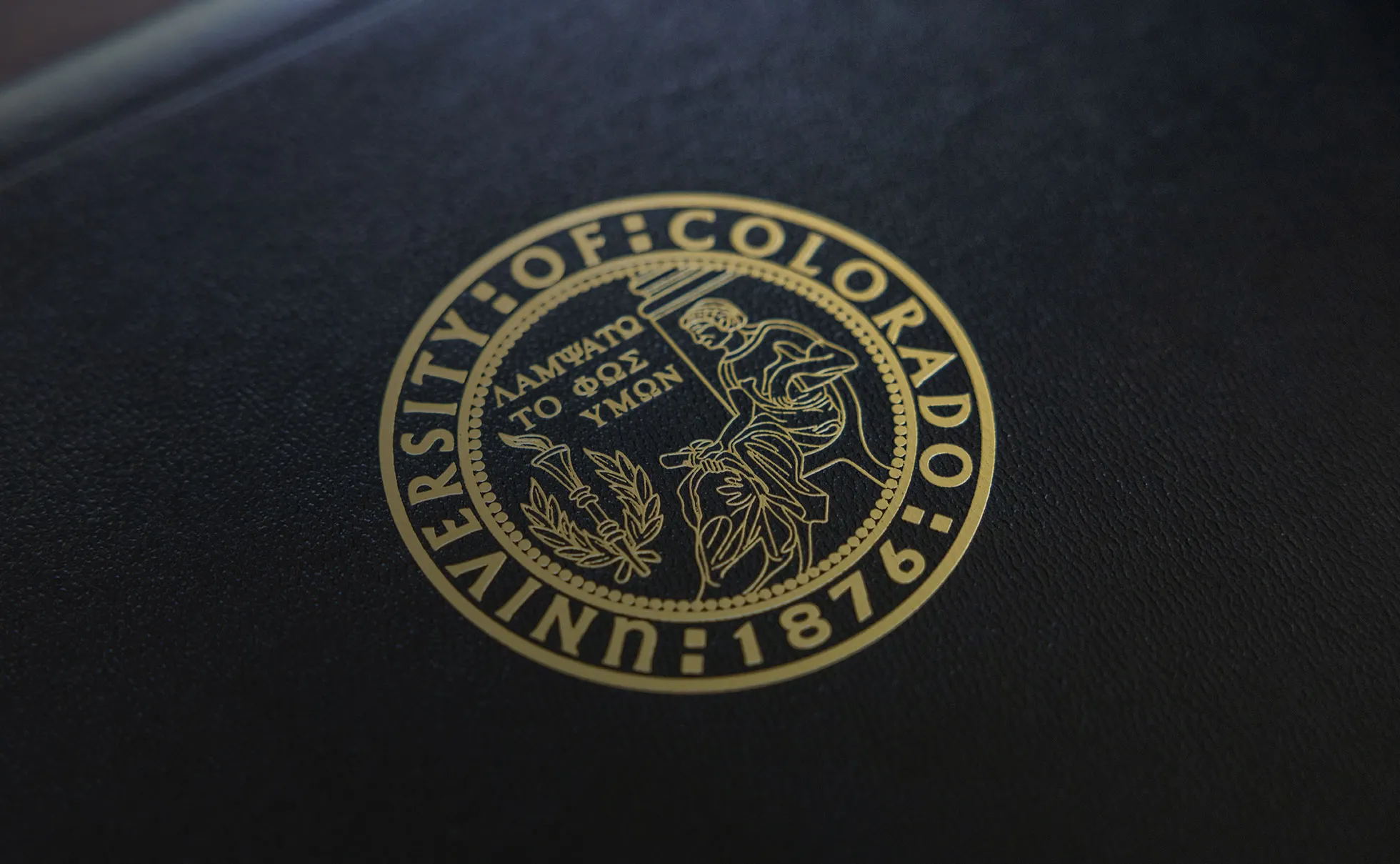
Commencement Traditions & History
Mission of the University of Colorado
The University of Colorado is a public research university with multiple campuses serving Colorado, the nation and the world through leadership in high-quality education and professional training, public service, advancing research and knowledge, and state-of-the-art health care.
Each campus has a distinct role and mission as provided by Colorado law.
(Laws of the Regents, Article 1, Part C. Adopted 02/11/2010.)
Mission of the University of Colorado Colorado Springs
The Colorado Springs campus of the University of Colorado shall be a comprehensive baccalaureate and specialized graduate research university with selective admission standards. The Colorado Springs campus shall offer liberal arts and sciences, business, engineering, health sciences, and teacher preparation undergraduate degree programs, and a selected number of master’s and doctoral degree programs.
Colorado Revised Statutes. Senate Bill 11-204. Section 2. 23-20-101 (1) (c) Approved June 10, 2011.
Vision of the University of Colorado Colorado Springs
UCCS, a premier comprehensive undergraduate and specialized graduate research university, provides students with academically rigorous and life-enriching experiences in a vibrant university community. We advance knowledge, integrate student learning with the spirit of discovery, and broaden access to higher education for the benefit of southern Colorado, the state, nation and world.
The Norlin Charge to Graduates
From the baccalaureate address by President George Norlin, of the University of Colorado, June 1935. Portrait of University of Colorado President George Norlin taken by Charles Snow, January 27, 1931
Courtesy, CU Boulder Libraries, Collections of Distinction.
“You are now certified to the world at large as alumni of the university. She is your kindly mother and you her cherished sons and daughters.
This exercise denotes not your severance from her, but your union with her. Commencement does not mean, as many wrongly think, the breaking of ties and the beginning of a life apart. Rather it marks your initiation in the fullest sense into the fellowship of the university, as bearers of her torch, as centers of her influence, as promoters of her spirit.
The university is not the campus, not the buildings on the campus, nor the faculties, nor the students of any one time — not one of these or all of them. The university consists of all who come into and go forth from her halls, who are touched by her influence and who carry on her spirit. Wherever you go, the university goes with you. Wherever you are at work, there is the university at work.
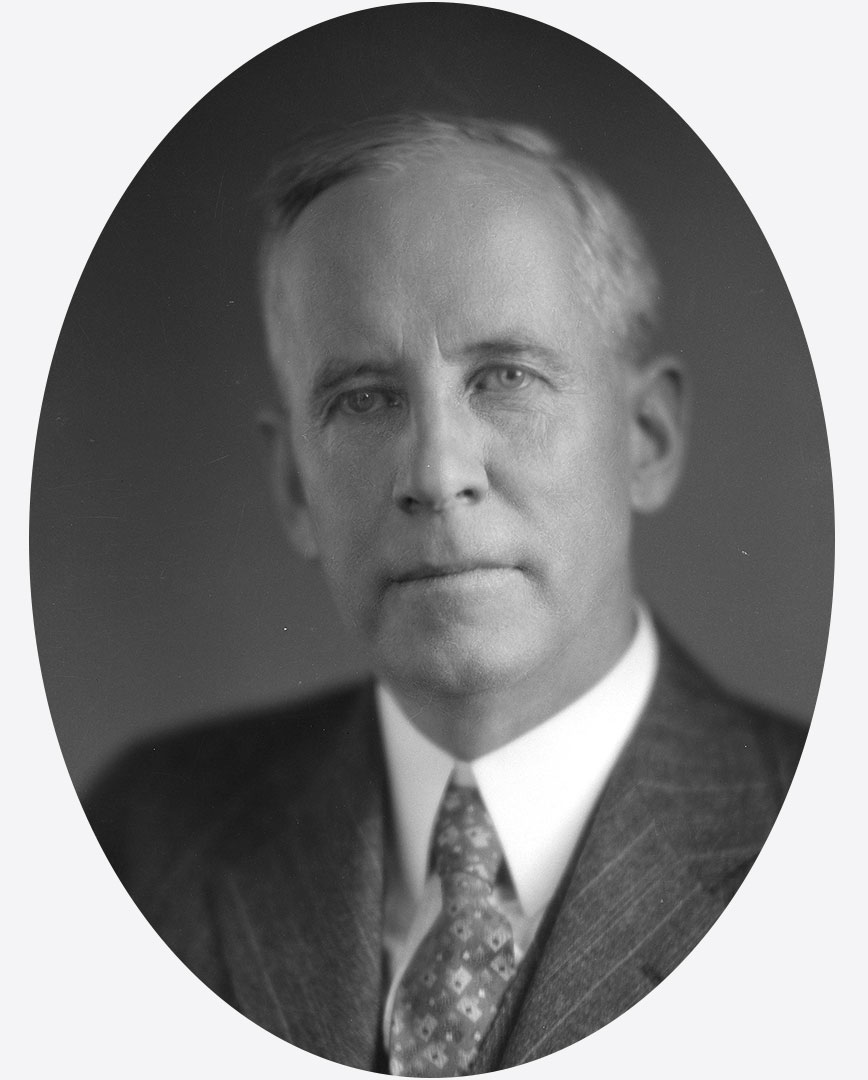
What the university purposes to be, what it must always strive to be, is represented on its seal, which is stamped on your diplomas — a lamp in the hands of youth. If its light shines not in you and from you, how great is its darkness! But if it shines in you today, and in the thousands before you, who can measure its power?
With hope and faith, I welcome you into the fellowship. I bid you farewell only in the sense that I pray you may fare well. You go forth, but not from us. We remain, but not severed from you. God go with you and be with you and us.”
We take a moment to orient the Norlin Charge in the context of its history, which includes harmful ideologies that historically plagued our community, state, and nation. We remind ourselves of the values we stand for and the power of education to combat ignorance and hatred. A UCCS degree not only qualifies our graduates to be leaders in their respective fields but is a mandate to positively influence the world and combat negative forces that seek to divide us.
The University Seal
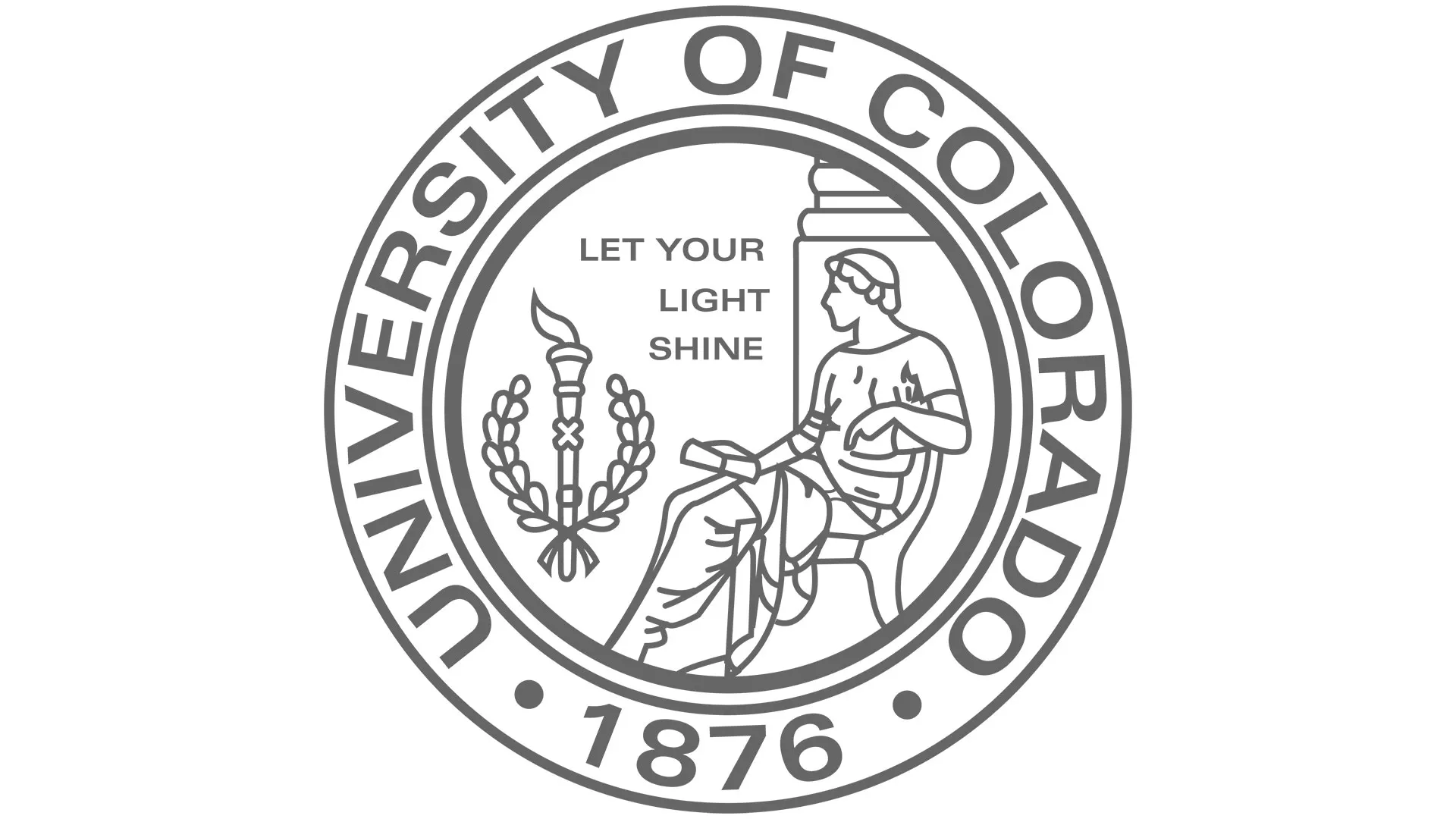
The University of Colorado has used three seals in its lifetime. The present seal, adopted in 1908, depicts a classical male Greek figure seated against a pillar and holding a scroll. Laurel branches frame a burning torch beside him. The Greek inscription means “Let Your Light Shine.” The seal’s designer, Henry Reed of Denver, chose the classical motif because Greek civilization “stands as the criterion of culture.” The laurel symbolizes honor or success, the youth of the figure suggests the “morning of life,” and the scroll represents written language.
From 1893 to 1908, the university seal was a copy of Wyon’s medallion, “Science Trims the Lamp of Life.” The classical figure of a Greek woman knelt before a lamp and was flanked by mariposa lilies, which President Baker described as “a true Colorado flower.” Before 1893, a seal was used which essentially copies the Colorado state seal. It was never adopted by the Regents.
The official seal of the University of Colorado is used primarily on official documents, such as diplomas and transcripts that have been issued on behalf of the university. The Board of Regents uses the seal in transmitting official business.
The Presidential Chain of Office
Chains of office or “necklets” are one of the oldest symbols of authority. They have been worn as early as the days of the Roman Empire and displayed by emperors, kings, pharaohs, and religious figures as physical representation of their power and position. In their formal portraits, both Napoleon and Henry the 8th were pictured wearing these symbols.
The tradition of the chain of office was passed down through the Middle Ages and coincided with the rise of the university system in Europe. Many of these European institutions of higher learning were branches of the church or connected to royal power and soon the chain of office became a treasured part of university practice.
When American colleges and universities began to establish themselves in the 17th century, they adopted the same chain of office tradition from their European counterparts. Each chain of office is as unique as the institution it represents. In most designs a prominent medallion or shield is suspended from a series of links. The central piece usually bears the institution’s official seal or logo, and it may be enhanced with enamel in the official colors of the school.
The links in each chain of office are also highly personal to the institution they represent. Often shaped to resemble specific school symbols, they can be engraved with meaningful words, mottos, or ideas. Chains of office are worn as part of the pomp and ceremony at official public celebrations of the college or university.
The University of Colorado Presidential Chain of Office was created in 1980 by Mary Sartor, M.F.A., University of Colorado Boulder, for the inauguration of President Arnold R. Weber. The chain was a gift to the university by Mr. and Mrs. David G. Hawthorn, Class of 1924.
Colorado gold and silver are used throughout the chain to symbolize the importance of those minerals to the history of the state. The gemstones chosen also consist entirely of minerals from Colorado.
Three pendants are suspended on the chain. The back pendant is the seal of the State of Colorado surrounded by a golden ribbon representing the golden “Circle of Knowledge.” The top pendant in the front, the seal of the University of Colorado surmounted by an arch set with diamond and topaz, signifies the necessary link between the search for knowledge and its practical application to the world outside the university. The seal is supported at the bottom by the laurel wreaths found in the seal, emblematic of honor and success.
The bottom pendant is centered with a golden topaz indicating man’s quest for knowledge. The surrounding ring is paved with fragmented cubes and diamonds which suggest fragments of knowledge with brilliant breakthroughs of understanding. The chain surrounding these pendants symbolizes the endless but ever-changing cycle of human knowledge.
The presidents of the University of Colorado are:
- Joseph A. Sewell: 1877–1887
- Horace M. Hale: 1887–1892
- James H. Baker: 1892–1914
- Livingston Farrand: 1914–1919
- George Norlin: 1919–1939
- Robert L. Stearns: 1939–1953
- Ward Darley: 1953–1956
- Quigg Newton: 1956–1963
- Joseph R. Smiley: 1963–1969
- Eugene H. Wilson: 1969
- Frederick P. Thieme: 1969–1974
- Roland C. Rautenstraus: 1974–1980
- Arnold R. Weber: 1980–1985
- William H. Baughn: 1985
- E. Gordon Gee: 1985–1990
- William H. Baughn: 1990–1991
- Judith E. N. Albino: 1991–1995
- John C. Buechner: 1995–2000
- Alexander E. Bracken: 2000
- Elizabeth Hoffman: 2000–2005
- Hank Brown: 2005–2008
- Bruce Benson: 2008-2019
- Mark Kennedy: 2019-2021
- Todd Saliman: 2021-present
Chancellor’s Chain of Office
A campus commencement tradition began in 2008 when the Chancellor’s Chain of Office was created to recognize and celebrate the chancellors who have led the University of Colorado Colorado Springs since its founding in 1965. The chain was a gift to the university from Kathy Griffith and other campus leaders. Mrs. Griffith worked in the Chancellor’s Office for 30 years – upon her retirement in 2008, and provided the initial gift to create the chain.
The chain is a traditional part of academic regalia that provides recognition at formal events to the person who currently holds the position of chancellor, as well as those who previously filled the role.
The Chancellor’s Chain of Office is connected with the interlocking CU to symbolize campus ties to the University of Colorado System. The words “Chancellor” and “Colorado Springs” surround the chain’s medallion of the university’s seal. The chain includes links denoting the university’s six colleges and schools; it also includes individual links recognizing all UCCS chancellors. The chancellors listed are:
- Lawrence Silverman: 1974-1977
- Don Schwartz: 1978-1982
- Neal Lane: 1984-1986
- Dwayne Nuzum: 1986-1993
- Linda Bunnell Shade: 1993-2001
- Pam Shockley-Zalabak: 2002-2017
- Venkat Reddy: 2017-2023
- Jennifer Sobanet: 2023-present
Academic Dress

The tradition of the academic costume began during the twelfth or thirteenth century in the early European universities. Since the clergy composed the majority of the educated class, academic dress is an adaptation of the cape or mantle which was usually of silk or wool and worn by church dignitaries in religious processions.
Through the years, great diversity in color and in style of cap, gown and hood developed. In 1896, the colleges and universities in the United States adopted a uniform code governing academic dress. Today, the black gown, hood, and mortar board worn by the graduates in most institutions follow this code.
While it is not apparent to the casual observer, the gowns worn by the recipients of the various degrees differ somewhat in design. The sleeves of the gown worn by the baccalaureate candidate are long and pointed, while the sleeves of the gown worn by the master’s degree recipients are square at one end with a slit at the elbow. The doctor’s gown has flowing sleeves with three bars of velvet and facing of velvet down the front of the gown.
Those who receive a master’s or a doctoral degree from the University of Colorado wear hoods lined with the school colors, silver and gold. The hood worn by the doctoral candidate differs in design from that of the master’s as it has side panels and is slightly longer. The velvet border of the hood indicates the degree and usually follows the same code as the color of the tassels.
The oxford cap, usually referred to as a mortar board, is black and has a long tassel which is fastened by a button on the top. Candidates for the baccalaureate degree wear the tassel pendant over the right front of the cap before the degree is conferred, then it is worn on the left thereafter.
Cum Laude candidates wear bronze honor cords. Magna Cum Laude and honors candidates wear silver honor cords. Summa Cum Laude and special honors candidates wear gold honor cords. The color of the tassel on the bachelor’s cap indicates the field of study, with the exception of the BA degrees in Letters, Arts & Sciences whose candidates wear white tassels indicating the arts.
Tassel Colors
Doctorate Tassel Colors
- Doctor of Philosophy: Old Gold
- Doctor of Nursing Practice: Apricot
Master Tassel Colors
- Master of Science/Sciences (Beth-El): Gold
- Master of Social Work: Citron
- Master of Business Administration: Sapphire
- Master of Criminal Justice: Peacock
- Master of Public Administration: Peacock
- Master of Arts (Education): Light Blue
- Master of Sciences (Education): Light Blue
- Master of Engineering/Science: Gold
- Master of Arts (LAS): White
- Master of Science/Sciences (LAS): Gold
Bachelor Tassel Colors
- Nursing: Apricot
- Health Care Science: Green
- Social Work: Citron
- Business: Sapphire
- Criminal Justice: Peacock
- Education: Light Blue
- Engineering: Orange
- Letters, Arts and Sciences: White
Associate Tassel Color
- Black
Honors Designations Descriptions
Undergraduates having been awarded honors are noted in the program. Definitions of Latin honors appear in the footnote following each college’s graduate listing. Following is an explanation of the criteria required of the additional honors designations. Please note not all colleges recognize all types of honors.
with Honors
with Special Honors
These terms denote students who have met criteria including, but not limited to, grade point average set by the college from which they are graduating that demonstrate exceptional academic performance within the college.
with Distinction
with High Distinction
with Highest Distinction
These terms denote students who have met criteria including, but not limited to, grade point average set by the department of the student’s major that demonstrate exceptional academic performance within the major.
Undergraduates having completed an honors program are also noted in the program. Following is an explanation of the criteria required of the honors programs.
University Honors
This program recognizes students who have successfully maintained a cumulative GPA of 3.75 and have completed 18 hours of Honors-dedicated or designated courses, including the First-Year Honors Seminar, Honors Public Speaking, and the Honors Capstone Seminar.
Mountain Lion Honors
This program recognizes students who have successfully maintained a cumulative GPA of 3.50 and have completed the First-Year Honors Seminar, Honors Public Speaking, and the Honors Capstone Seminar.
UCCS Land Acknowledgement
The University of Colorado Colorado Springs (UCCS) commits to acknowledging the land on which we reside. We honor our Native Indigenous communities past, present, and emerging, and recognize the original inhabitants and traditional guardians of what is now Colorado Springs.
We honor this land as the ancestral home of the ‘Nuuchiu’, which includes the Northern Ute, the Southern Ute, and the Ute Mountain Ute Peoples. The ‘Nuuchiu’ originally referred to Pike’s Peak as ‘Tava-kaavi’, or Sun Mountain, being the first peak of the Shining Mountains to see the sun’s rays.
We also recognize the many Indigenous Peoples in this region, including the Apache Nation, the Arapaho Nation, the Cheyenne Nation, the Comanche Tribe, and the Kiowa Tribe, and their historical
and continuing relationships as stewards of this land.
Land acknowledgments do not exist in the past or as historical context. Colonialism is a current and ongoing practice, and thus we remain mindful of its present impacts. As an institution of higher education, we share the responsibility to actively listen, reflect, and center the histories and lived experiences of Indigenous Peoples.
In community, we will work to dismantle the tragic and oppressive systems that displaced Native Peoples and commit to promoting Indigenous visibility and re-indigenizing our spaces.
CU Systemwide Lands Recognition Statement
As we gather, we honor and acknowledge that the University of Colorado’s four campuses are on the traditional territories and ancestral homelands of the Cheyenne, Arapaho, Ute, Apache, Comanche, Kiowa, Lakota, Pueblo and Shoshone Nations. Further, we acknowledge the 48 contemporary tribal nations historically tied to the lands that comprise what is now called Colorado.
Acknowledging that we live in the homelands of Indigenous peoples recognizes the original stewards of these lands and their legacies. With this land acknowledgment, we celebrate the many contributions of Native peoples to the fields of medicine, mathematics, government and military service, arts, literature, engineering and more. We also recognize the sophisticated and intricate knowledge systems Indigenous peoples have developed in relationship to their lands.
We recognize and affirm the ties these nations have to their traditional homelands and the many Indigenous people who thrive in this place, alive and strong. We also acknowledge the painful history of ill treatment and forced removal that has had a profoundly negative impact on Native nations.
We respect the many diverse Indigenous peoples still connected to this land. We honor them and thank the indigenous ancestors of this place. The University of Colorado pledges to provide educational opportunities for Native students, faculty and staff and advance our mission to understand the history and contemporary lives of Native peoples.
The National Anthem
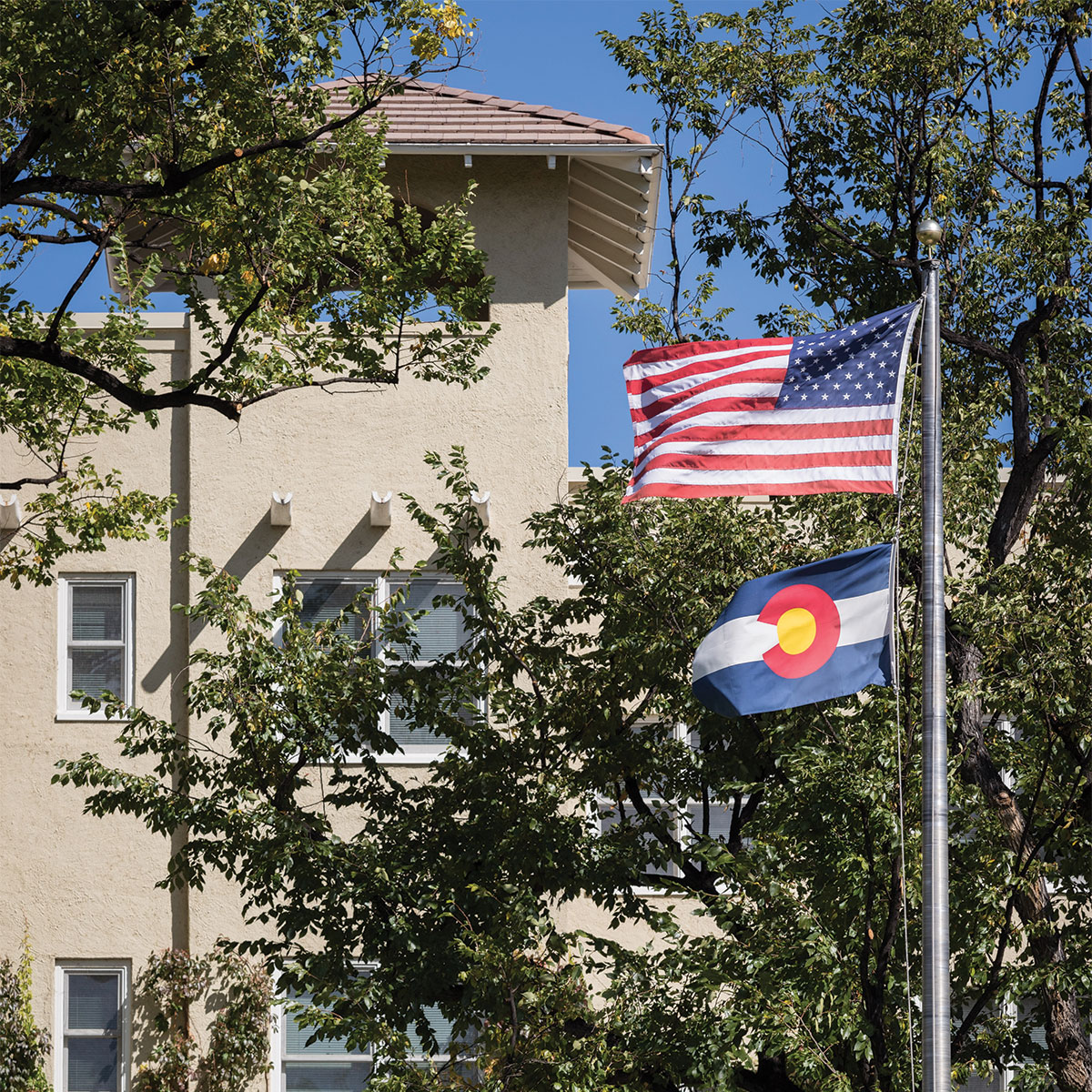 Oh, say, can you see, by the dawn’s early light,
Oh, say, can you see, by the dawn’s early light,
What so proudly we hail’d at the twilight’s last gleaming?
Whose broad stripes and bright stars, thro’ the perilous fight,
O’er the ramparts we watch’d, were so gallantly streaming?
And the rockets’ red glare, the bombs bursting in air,
Gave proof thro’ the night that our flag was still there.
O say, does that star-spangled banner yet wave
O’er the land of the free and the home of the brave?
UCCS Site and University/Campus History
The history of the University of Colorado dates back to the earliest days of Colorado and precedes the creation of the state. At its first session in 1861, the Colorado territorial legislature passed an act providing for the creation of a university in Boulder. To establish the university, the legislature appropriated $15,000, which was matched by Boulder residents. However, the formal founding was delayed for another fifteen years by the Civil War. When Colorado became the 38th state in the Union in 1876, the university was declared an institution of the state, and the Board of Regents of the University of Colorado was established under Colorado’s State Constitution as its governing authority.
The University of Colorado Colorado Springs has a rich history as a site and campus. Many millennia before any students began studying here, a small group of ancestral American Indians set up camp overlooking an arroyo on the west edge of what is now the campus. Remains from approximately 30 sites used by Plains Indians from about 100 A.D. to 1400 A.D. dot the campus grounds. The cultural heritage of the area is witnessed not only architecturally and in diverse ecological phenomena but also in the significant prehistoric archeological components observable throughout the University acreage. The daily discarded artifacts of Cragmor Sanitorium life - medicine bottles, crumbling foundations, and broken dishes are intertwined with artifacts from the prehistory of the region.
Henry Austin, for whom the bluffs on campus were named, purchased a large part of what is now the campus in 1873 to graze herds of sheep. The first known building on the site was a cabin built by the world-famous physician, Dr. Edwin Solly. Dr. Solly suffered from tuberculosis and moved from England to the area, as the region was becoming known for its healthy climate. After years of planning for a sanatorium on the site, Dr. Solly was spurred into action in 1902 when General William Jackson Palmer (founder of Colorado Springs) gave him 100 acres of land on Austin Bluffs and $50,000 towards the start of his sanatorium. Solly selected one of the most important and versatile architects working in Southern Colorado, Thomas MacLaren. MacLaren (1863-1928), acknowledged master of architecture, designed many structures in Colorado Springs including several sections of the opulent BROADMOOR Hotel. The sanitorium building echoed the aesthetics of the founders merging with Spanish-Moorish influence; it embodied the heritage of the builders of Colorado Springs and the understated beauty of the Hispanic culture. Cragmor Sanitorium (now Main Hall) opened its doors to patients on June 20, 1905, and thereafter became the most luxurious place for well-to-do consumptives in the United States. Dr. Solly named the site Cragmoor (later shortened to Cragmor), reminiscent of the crags and moors he had left behind in Great Britain.
Cragmor became the health mecca for artists, writers, and corporate tycoons who found not only their health but also a new home in Colorado Springs. Laura la Tille (Broadway performer), Constance Pulitzer (Joseph Pulitzer’s daughter), Murielane Pancost (concert soprano), Jeanette MacCoil (well-known New York musician), and Russell Cheney (renowned painter) spent time and regained their health at Cragmor. Upon his death Solly was memorialized as a world class physician who had brought the Colorado Springs community to global acclaim for its outstanding health facility. Ironically, the world forgot Solly as Cragmor became even more established under the direction of new leaders in health care: Gerald B. Webb, Alexius M. Forster, Otto Einstein, and George J. Dwire.
The 1930’s stock market crash brought financial disaster to many of the Cragmor Sanitorium’s exclusive clientele. The facility was adapted to serve the health needs of less affluent patients. Alexius Forster’s death in 1954 (took charge of Cragmor in 1910 at age 29) found Cragmor at a loss for medical and financial leadership. The last decade of the sanitorium’s homeopathic life was to become tied to the Bureau of Indian Affairs as Navajo Indians were flown in to Cragmor. This was one of the first public health programs launched by the newly formed U.S. Department of Health, Education and Welfare (HEW). The first Indian patients arrived at Cragmor in 1952 with the signing of a government contract between the Cragmor Foundation and HEW. The institution would be guaranteed a permanent base of financial support. In return, Cragmor would provide for the medical needs of hundreds of tuberculous Navajos. George Dwire, Managing Director, oversaw the decade of fiscal recovery for the institution. He created a dynamic program which not only provided for the health needs of hundreds of Navajos infected with tuberculosis but also expanded to include educational and occupational therapy. As the health crisis of the Navajo people subsided so did the Federal funding for Cragmor. By April of 1962, remaining patients were being transferred to other facilities.
As early as the 1920s, the University of Colorado offered courses at numerous Colorado Springs locations including Colorado College and various storefronts. By the mid-1960s, community leaders were pressing for a full-fledged University of Colorado presence in the community. In his negotiations with then-Governor John Love, Hewlett-Packard (HP) co-founder David Packard, a Pueblo native, wanted a permanent University of Colorado campus in Colorado Springs to support the educational needs of company employees. The combination of the state’s desire to attract HP to Colorado Springs and George J. Dwire’s sale of the defunct 80-acre Cragmor Sanatorium property for $1 led to birth of the Colorado Springs Center of the University of Colorado. June 15, 1964, commemorated the funding and legislation signed by Governor Love allowing the University of Colorado to assume custody of Cragmor. In 1965, the Colorado Springs Center of the University of Colorado opened on the south side of Austin Bluffs, an area which showcased a spectacular panoramic view of Pikes Peak and the Garden of the Gods; tuition was $13 per credit hour. Professor offices in Cragmor Manor (now Cragmor Hall) were equipped with small kitchenettes and private bathrooms, due to the building’s previous use as a nursing home (Cragmor Manor was added to the Sanitorium in the 1950s). A few offices were still outfitted with this unique piece of history as late as 2002; Cragmor Hall was completely remodeled and reopened in January 2004.
From 1965 to 1972 the Colorado Springs Center operated as a division or extension of the Boulder campus. It became the first permanent home for a growing following of scholars. Colorado Constitutional Amendment 4, approved at the 1972 Colorado General Election, designated the Colorado Springs campus and two other centers as distinct campuses of the University of Colorado. Dwire Hall opened as the first solely academic building on campus in 1972; it was completely remodeled in 2007. In 1974, the University of Colorado reorganized into four campuses – Colorado Springs, Boulder, Denver, and the Health Sciences Center in Denver. The two Denver campuses later consolidated administratively in June 2004; the model was reversed in 2014 for each campus to again have its own chancellor. 1974 also marked the establishment of the first Chancellor of the Colorado Springs campus, with ties to the Boulder campus being changed to have the campus directly reporting to the President of the University. UCCS grew over the years, and in 1996 the first on-campus student housing opened. The next year a community referendum merged the city-owned Beth-El College of Nursing with the campus. During the 2010-2011 new branding campaign, “at” was removed from the official UCCS name – University of Colorado at Colorado Springs – to become University of Colorado Colorado Springs.
Because of the ties to HP, initial university programs focused on engineering and business. Today, 59 years after its beginning, UCCS offers 56 bachelor’s, 23 master’s, and eight doctoral degrees in six colleges. The initial university programs of engineering and business still serve as pillars of the university, and are joined by a broad range of degree programs offered in the liberal arts and sciences, as well as professional programs in nursing, education and public service to meet the needs of Colorado’s second-largest metropolitan area and beyond. In 2012, Colorado Springs voters again added to the UCCS campus by agreeing to lease city-owned Memorial Hospital to University of Colorado Health. As part of the agreement, an administrative branch of the CU School of Medicine is in the University Hall at UCCS. Meaningful partnerships with the National Cybersecurity Center cast an eye toward the future. From its original 80 acres, UCCS has added 450 additional acres along Austin Bluffs Parkway and North Nevada Avenue. North Nevada Avenue continued growth with the opening of the William J. Hybl Sports Medicine and Performance Center adjacent to the Margot and John Lane Academic and Health Sciences Center in the summer 2020. Most recently, UCCS opened the Anschutz Engineering Center in February 2024.
UCCS spring commencement ceremonies have been held at the old BROADMOOR Ice Arena, a campus parking lot where the Osborne Center for Science & Engineering now stands, and The BROADMOOR World Arena. The first December commencement ceremony for summer and fall graduates was held on December 14, 2007 at the Pikes Peak Center. After only two years, the December graduates outgrew the Pikes Peak Center, and now all yearly ceremonies are held at The BROADMOOR World Arena. The COVID-19 pandemic caused the May and December 2020 and May 2021 Commencements to be the first-ever in-person ceremonies to be cancelled. Since the first UCCS commencement in 1975, over 59,000 students have graduated from the University of Colorado Colorado Springs.
UCCS Mascot
The University of Colorado Colorado Springs mascot is the mountain lion. It is visible across campus in a variety of ways – as the artistic logo on UCCS shuttles, the grand marble statue on El Pomar Plaza (moved from University Center Lower Plaza in March 2016), and the costumed mascot who ignites crowds at athletic games and official campus events. The mountain lion is an integral part of campus life, but that has not always been the case.
As UCCS began to develop an intercollegiate sports program in the 1980s, it became necessary to establish team identity with official colors and a mascot. In 1986, the first UCCS mascot, the hawk, was chosen and green and white sports uniforms were purchased. The Editor’s Corner in The Scribe (student newspaper) was even renamed “The Hawk’s Eye.” Until this time, the campus was told it was part of the University of Colorado System, and as such, already had a mascot — the buffalo. NCAA rules stated that due to differences in division level sports played at the Boulder and Colorado Springs campuses, UCCS was not allowed to claim the buffalo as its mascot. At the June 18, 1987 University of Colorado Board of Regents Meeting, the “regents decided not to officially designate a school mascot and colors for UCCS, but instead opted to allow UCCS to choose its own mascot while still maintaining the official CU colors of gold, silver, blue and black” (The Scribe, August 1987, pg 1). “CU Gold” became the accepted identity of the sports teams in Fall 1987.
In 1991, the student body voted for the “Fighting Longneckers” – or giraffes – to become the unofficial spirit symbol. This was personified by “Stretch,” a costumed giraffe obtained by former chancellor Dwayne Nuzum. Other options for a new spirit symbol considered by the Student Government Association (SGA) Committee were eagles, prospectors, gold diggers, golden avalanche, and pronghorns. Popularity of the spirit symbol waned with time. Many did not connect the giraffe with “CU Gold” and wanted a stronger identity.
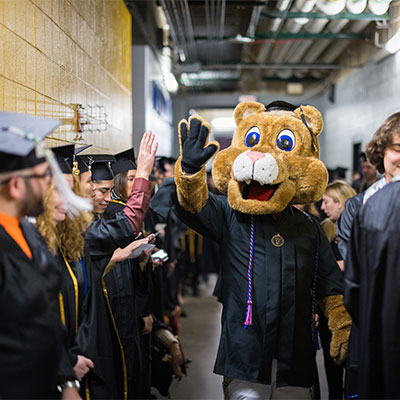
Not until 1997 did a new campaign for a UCCS mascot begin. Realizing a need for a credible mascot, the SGA collected nominees for an official mascot. The overwhelming suggestion was the mountain lion, which won by 86% of the student body vote in spring 1998. Since that time, it has been the officially recognized symbol of the University of Colorado Colorado Springs. Dakota, a 14-year-old mountain lion at the Cheyenne Mountain Zoo, was adopted by the student body in December 2002. Boomer, the costumed mascot, was named by the winner of the “Name the Mascot” contest in September 2003 and was officially introduced at Fall Fest (original name for Back to the Bluffs and Homecoming) that year.
In spring 2011 the UCCS student body voted to officially change the name of the school mascot to Clyde, based on the name of a live mascot UCCS supported at the time.
Details provided by Kraemer Family Library Archives.